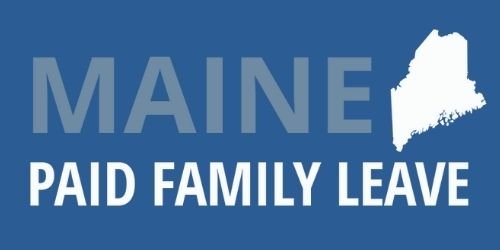Sarah’s Story
My name is Sarah. I am a nurse, whose maternity leave began when I gave birth to my third daughter Maren two weeks early in April 2019. In the previous nine months I had sparsely utilized my earned benefit time (EBT), as I knew in order to have my time off with my newborn I would need the bulk of that to still have an income when in the postpartum period. Up until the day prior to delivery l was working my full-time job in my role as Clinical Liaison RN for a home health agency.
I was determined to take the 12 weeks off that I am allowed under the Family Medical Leave Act (FMLA) as I know how crucial this period is for postpartum recovery, bonding, and breastfeeding success. When my first two daughters were born in 2009 and 2012, I was a nurse for the State of Maine and also had to bank my EBT in order to have a portion of time off paid while on maternity leave. We can do better.
I have short term disability insurance that covered only 66% of my salary for a total of four weeks, no matter how my baby was delivered. I supplemented those four weeks with my EBT time, and then took 6 more weeks of EBT time before going off the payroll for two weeks. Going off payroll also meant I received a bill for what I owed for my family health insurance during that time in addition to receiving a bill for my out of pocket expenses to meet my health insurance deductible, and other fees, which at minimum, was over $2000. Though I know my situation was better than some, it was stressful. Stressful to think about not getting paid. Stressful to think about draining my EBT time. Stressful to think about the medical bills. Make note that stress did not by any means help support my breastfeeding efforts.
My number one priority during these now 10.5 weeks remaining of leave is to bond with my baby and establish a good milk supply, so that when I returned to work she could continue to be solely fed breast milk until 6 months, and breastfeeding could continue to the year mark and beyond. Pumping to start building my supply for storage began at 5 days post-delivery. I continued to pump at least once a day, increasing gradually to twice a day while on leave, and then at least three times a day upon my return to work while away from my baby. Pumping consists of utilizing a breast pump for 10-15 minutes intervals to remove breastmilk between baby feedings at breast. Breastmilk is a supply and demand system, so the more the baby feeds at the breast and/or the more pumping that occurs with a breast pump, the more milk that is produced.
Our national goals, according to Healthy People 2020, are to increase the proportion of infants that are exclusively breastfed to 25.5% from the 14.1% baseline. The Healthy People 2020 target for infants breastfeeding to one year is 34.1% from the baseline of 22.7%. We know that breastfeeding is of great benefit to babies. Breastfed babies have lower risks of asthma, childhood obesity, ear infections, sudden infant death syndrome (SIDS), and Type 2 diabetes to name a few. For mothers, breastfeeding lowers their risk of Type 2 diabetes, ovarian cancer, and breast cancer. If we could aid in prevention of these risks we not only have happy, healthy babies and mothers, but also have lower medical costs from chronic disease. Paid leave is the starting point to making breastfeeding goals attainable for women in our state, while decreasing levels of stress that hinder breastfeeding and ultimately improving health outcomes.
Have a story to tell? Visit our paid leave story form and join the conversation!

